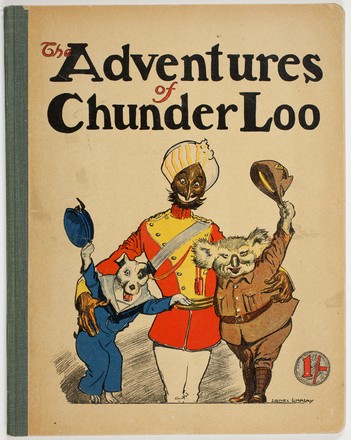Lionel was the third son born in the Lindsay family. As a boy, he was particularly taken by the drawings in the London magazine Punch, and taught himself to draw by making copies from issues owned by his father. Charles Keene, a Punch illustrator, remained a great influence on Lionel’s own artistic development.
Lionel was awarded a full scholarship to Creswick Grammar school, where he followed his elder brother Percy in editing the school newspaper, the Boomerang. After leaving school, Lionel moved to Melbourne and worked as an illustrator for a number of periodicals, including the Hawklet, Free Lance and Clarion. He also enrolled at the National Gallery School in the life drawing class.
In 1900 Lionel saw his first production of the Spanish opera Carmen and, already with a boyhood passion for Don Quixote, he fell in love with Spain. This love endured throughout his life. He learnt Spanish from a local Sevillian cork-cutter and in 1902 sailed via Marseilles to Seville. Travelling through England and Italy, he became engaged to Jane Ann (Jean) Dyson, the sister of Australian cartoonist Will Dyson.
Returning to Sydney in 1903, Lindsay found work as the cartoonist of the Evening News, edited by A B (Banjo) Paterson. He was paid £4 per week with the right to contribute illustrations to the Bulletin. Over the next few years, he became interested in the Rocks area of Sydney and began to make drawings and etchings depicting the old, decaying buildings which were beginning to disappear, as large areas were demolished for fear of another outbreak of the plague.
Lindsay’s first etchings were published in 1907 and were shown in the 1907 exhibition of the Society of Artists, Sydney, beginning a new fashion for etching. In 1916 the art journal Art in Australia began publication and Lindsay became a regular contributor of articles and prints. In 1918 he was appointed a trustee of the Art Gallery of NSW (then called the National Gallery of NSW), a position which he held until 1949.
In 1926 Lindsay again visited Europe, travelling extensively in Sicily and Italy before visiting Paris and London, where Colnaghi of Bond Street offered him an exhibition. The exhibition of 67 etchings, dry-points and wood-engravings included landscapes and cityscapes, churches and other buildings of Australia, Spain and Italy. The exhibition was hailed as a great success and Lindsay’s skill as a printmaker was acknowledged on the international stage. In Australia, he continued to exhibit regularly with the Macquarie Galleries in Sydney and the Sedon Gallery in Melbourne. He was knighted in 1941 for services to art.



 Back to list
Back to list